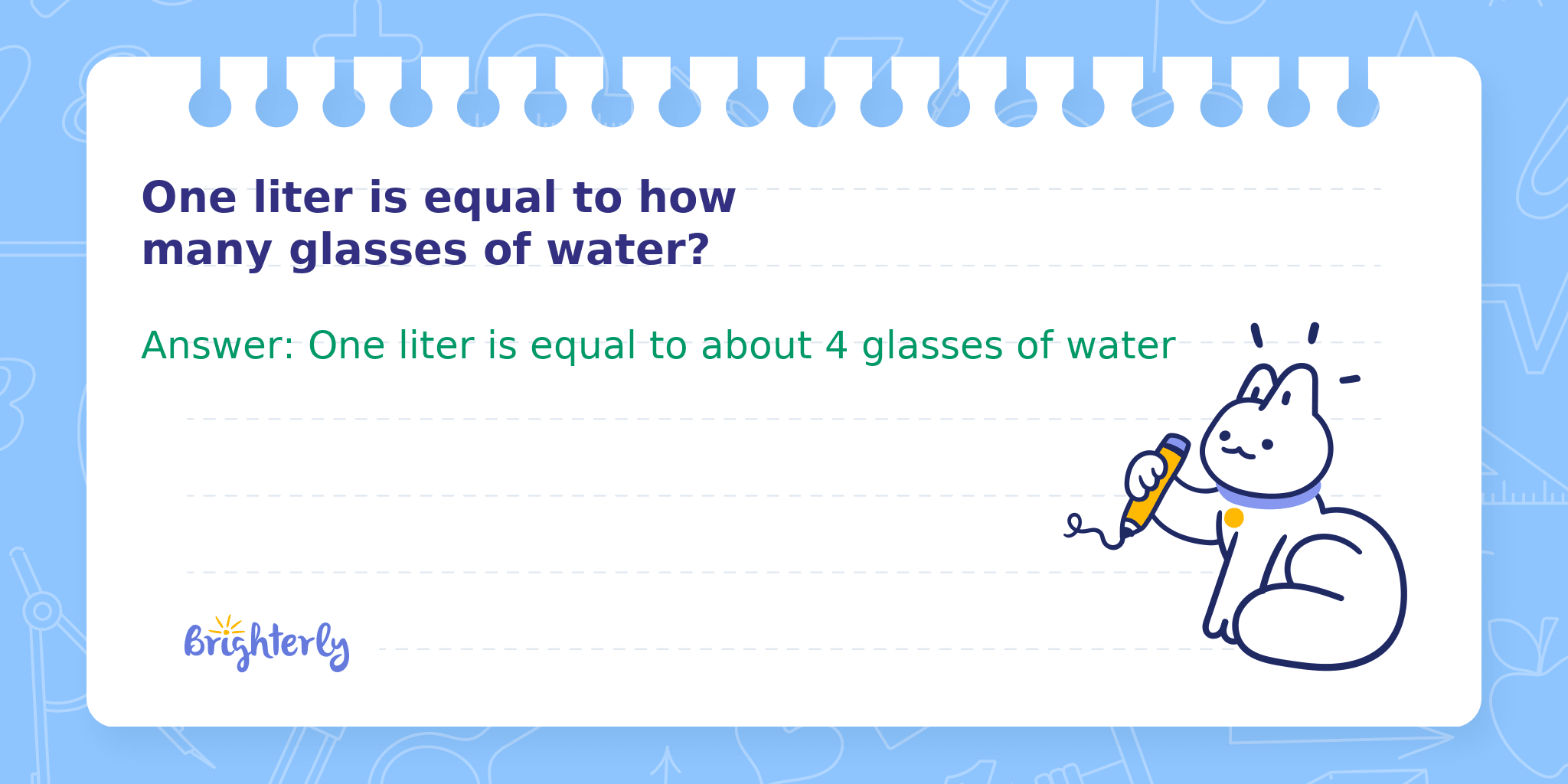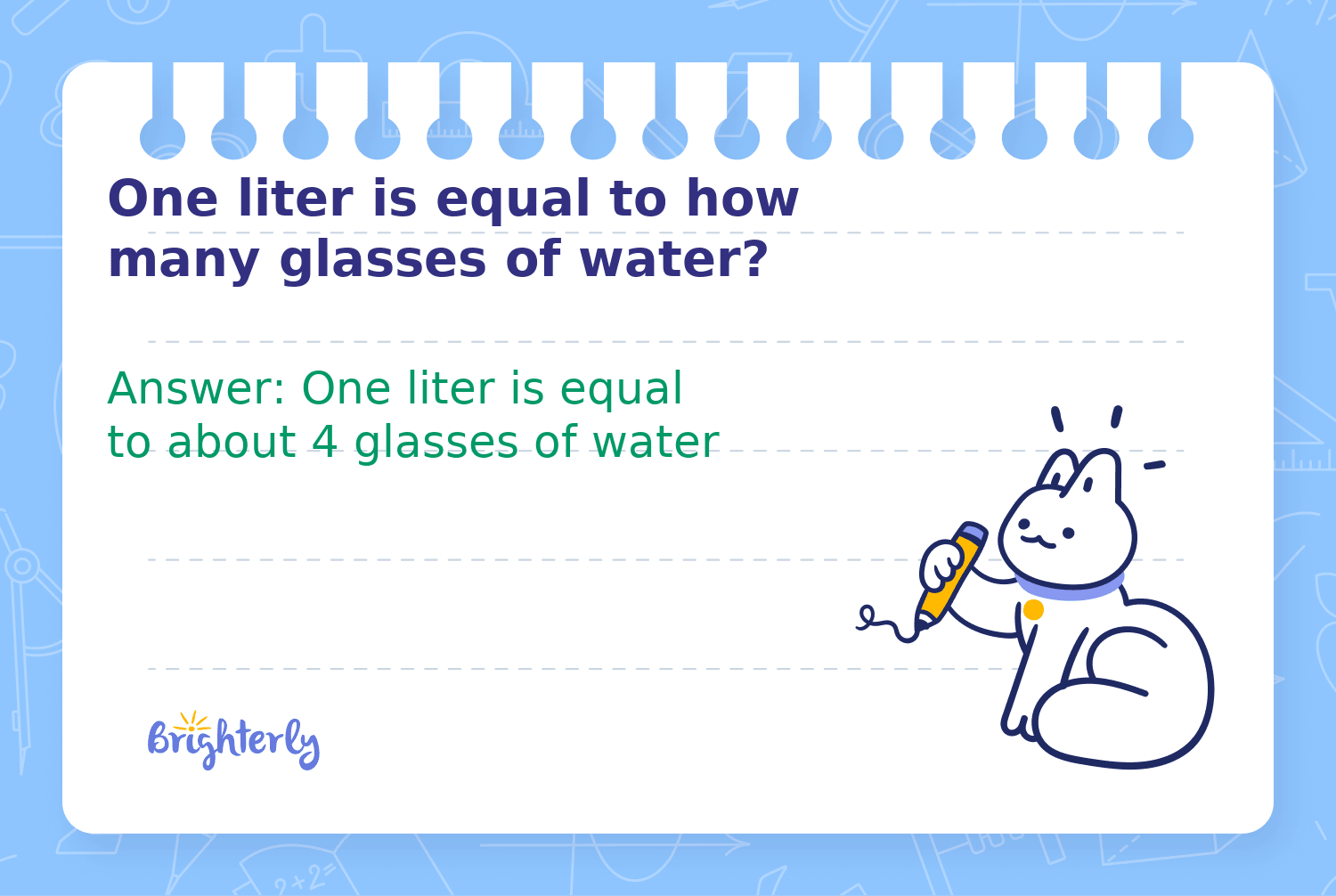
Reviewed by Jo-ann Caballes
One liter is equal to how many glasses of water?
Answer: One liter is equal to about 4 glasses of water
Measuring water can be done using various units, including liters and glasses. The number of glasses in a liter depends on the typical volume of a drinking glass, which is usually assumed to be around 250 milliliters. Knowing how many glasses make up a liter helps with hydration tracking and recipe preparation.
Methods
Math Tutor Explanation Using the Unit Conversion Method
This method calculates how many standard glasses of water are in one liter by dividing the volume of a liter by the typical volume of a glass.
Step 1: Step 1: Know that 1 liter equals 1000 milliliters
Step 2: Step 2: Assume a standard glass holds 250 milliliters
Math Tutor Explanation Using Proportional Reasoning
This method helps you estimate the number of glasses in a liter if your cups or glasses are a different size.
Step 1: Step 1: Determine the volume of your glass (for example, 200 milliliters)
Step 2: Step 2: Divide 1000 milliliters by the volume of your glass to find the number of glasses in one liter
Step 1:
Step 2:
Math Tutor suggests: Water Measurements and Everyday Math Conversions
Explore related math questions about water measurements, conversion between units, and practical real-world applications similar to 'One liter is equal to how many glasses of water?'.
FAQ on Water Volume Measurement
How big is a standard glass of water?
A standard glass of water is usually about 250 milliliters
Can the number of glasses in a liter change?
Yes, it changes depending on the size of the glass
How many cups are equivalent to 1 liter?
One liter is equal to about 4 metric cups (each 250 ml)
Why is knowing water conversions useful?
It helps track daily water intake, follow recipes, and understand fluid consumption
How do I measure a liter without a measuring cup?
Fill a standard 250 ml glass four times to roughly make up one liter


